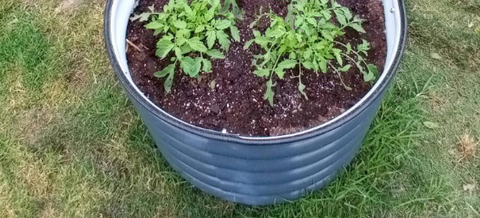Tips from Olle Garden Bed: How to Plant And Take Care of Your Gardenias
Gardenia is a precious subtropical, flowering perennial shrub or tree, which can produce intoxicating fragrant flowers and dark green, shiny leaves. Gardenia is a lovely supplement to cottage gardens and traditional gardens. It can be used as hedges, border plants, yard accents, and even as indoor plants. The following content also has some reference value for raised garden beds.
Gardenia plant care can be challenging because they may be a little moody, but they are well worth the effort. Follow our tips on Gardenia plant care, so you can successfully plant these sweet treasures year after year.

Ideal Soil Composition and pH Value for Gardenia Planting
Gardenia likes loam, sandy, fertile and well drained soil. High quality potting mixtures are ideal for growing gardenias in indoor or outdoor pots. When planting gardenias underground, use a large amount of organic matter, sand or perlite, and well decomposed compost to correct your native soil. This will help keep the soil moist and drain the water from the plant roots more effectively.
Gardenia plants grow best when the soil is slightly acidic, with a target pH of 5.0 to 6.0. If you are not sure about your soil quality or pH value, please take soil samples to the local promotion office. Experts will break down the types of soil you have and make recommendations on organic soil amendments needed for peak growth performance.
Light and temperature requirements of Gardenia jasminoides
When learning Gardenia plant care, it is important to consider light and temperature. The amount of sunlight required for Gardenia to thrive depends to some extent on their planting location and the intensity of sunlight. The ideal growth temperature for these gorgeous plants is about 65 to 75 degrees Fahrenheit.
In a hot climate, plant gardenias in an area of the garden that receives sufficient sunlight and mottled shadows. The sunshine in the morning and the shade in the afternoon are the best. In the hot months of the year, some shadows are essential.
Although gardenia is a plant that likes sunshine, too much sunshine will scorch the leaves of the plant and cause precious buds to fall off from the plant.
In a cool climate, plant in sufficient sunlight. Shading is not necessary, especially if the planting bed is covered.
When you plant gardenias in an indoor pot, place them on a sunny window and receive 6-8 hours of direct sunlight.
Gardenia planted outdoors in containers should avoid too much strong sunlight. They should receive a lot of indirect light, but not in direct sunlight.

Where to plant gardenias
When considering how to grow and take care of your gardenias, there are many choices where to grow them. Although they are a little picky about their growing environment, if you are determined to plant this beloved plant, you can try them in different places.
Gardenia is a subtropical plant, which thrives in a warm climate with sufficient humidity. They are hardy in Zone 8-11, but some varieties are hardy in Zone 6 and Zone 7. Gardenia can be grown outdoors, underground or in containers, or in indoor pots.
The best way to water gardenias
Gardenia plant care is best carried out in moist soil. They should receive at least one inch of water per week. Water regularly to make the soil moist but never wet. The proper balance of water in Gardenia jasminoides Ellis is crucial to its success. Plants that receive too much water or let it dry will cause the gardenia bud to fall off from the plant or refuse to open.
As a subtropical plant, gardenia longed for humidity. In addition to regular watering, it is also helpful to water plants every day, especially when planting indoors.
How to take care of gardenia plants
Nutrient rich soil is essential for Gardenia. You can give these plants the best start is to use a lot of rich organic materials to improve the soil. The decomposed compost, decomposed forest materials, worm castings and excrement make Gardenia keep good nutrition.
Throughout the growing season, feed your plants a fertilizer specially formulated for acid loving plants every two to four weeks. Do not feed gardenia plants during the dormancy period, which is usually between November and February in winter.
Pruning Gardenia Plants
Gardenia plant care includes pruning. Pruning is important to maintain their shape and encourage new growth.
Cut the used flowers just below the first leaf node.
During the dormancy period from November to February, the branches of plants shall be trimmed and shaped as required.

Common gardenia pests
Gardenia is easy to produce some common diseases and pests. These plants are resistant to deer, which is a bonus, but more small insects may bring more problems to gardenia plants. Hoses can be your best friend in managing common pests.
Spider mites – These pests thrive in dry conditions. Spray plant leaves with water regularly to prevent spider mites from finding your gardenia plants.
Whitefly – A sharp spray of hose can shoot whiteflies off plants. Be sure to spray the top and bottom of the leaves. You can also hang yellow sticky traps on the branches of plants.
Powdery Cocks – Use a steady stream of water to remove powdery bugs from plants. Keep enough planting, watering and fertilization to promote plant health, so that they are less prone to the problem of mealybugs.
Root Rot – Ensure that plants grow in well drained soil and are not over watered. Gardenia plants do not like humid environments.
Once you have mastered the skills to successfully grow gardenias, you can enjoy it. These irresistible, heat loving plants have a wide variety, but they all have strong flower characteristics.
